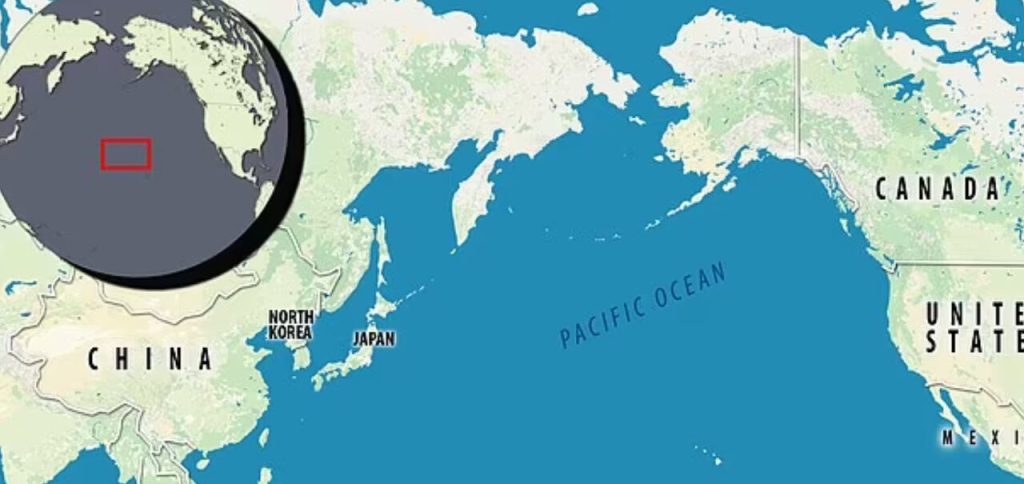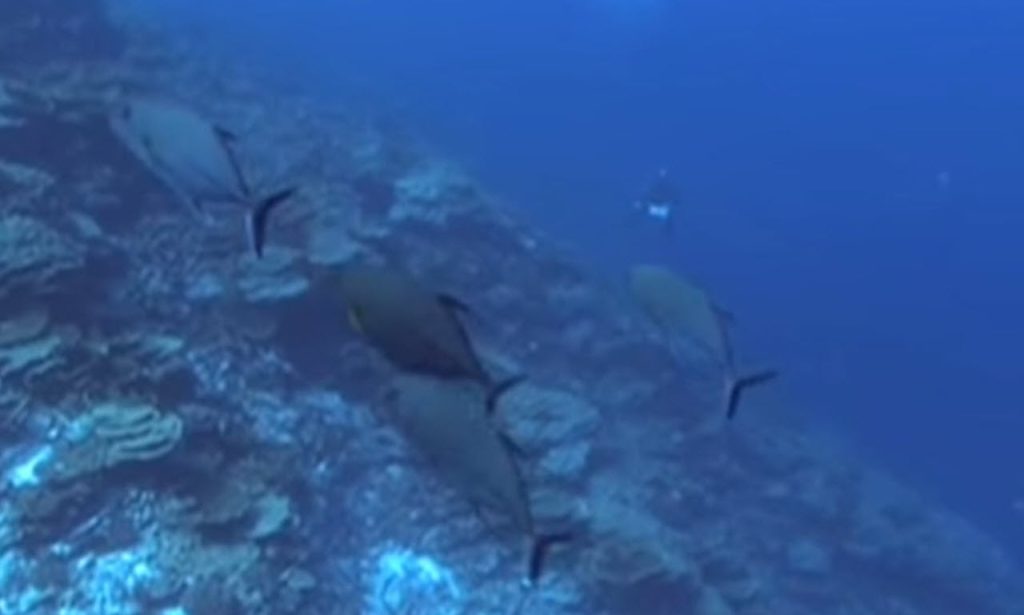Unveiling the Mystery Behind Vostok Island: Google Maps Censorship or Natural Phenomenon?
Some mysteries are meant to remain hidden, while others spark curiosity that demands answers. One such enigma recently surfaced online, stirring conspiracy theories and intense discussions among internet users. This particular puzzle involved a strange dark mass spotted on Google Maps, floating in the vast expanse of the Pacific Ocean, right above Vostok Island.

Google Maps has undoubtedly revolutionized how we navigate the world, providing us with unprecedented access to remote areas that were once inaccessible. However, this newfound transparency occasionally raises eyebrows, especially when curious minds detect anomalies. The sighting of a dark, seemingly censored mass over Vostok Island is a prime example of this.
The story began when a user on Reddit, a platform known for its enthusiastic communities dedicated to uncovering oddities, shared an image that quickly went viral. The thread was part of a group focused on Google Maps discoveries, where members share unusual sights they stumble upon. This image, in particular, drew attention because it appeared to show something unusual—a shadowy mass covering Vostok Island, making it look like a black blotch in the middle of the ocean.
Is It a Shadow or a Case of Censorship?
When the image first surfaced, the internet went into a frenzy with theories and speculations. Some users were convinced that the island was being deliberately censored by Google. According to this line of thought, the mysterious black mass was an attempt to hide something from the public eye. Theories ranged from secret military bases to hidden government experiments, all shrouded in secrecy.
The image itself was peculiar. At first glance, it appeared to resemble the silhouette of an island, yet there was something off about it. The shape was too dark, almost pitch black, obscuring any details beneath it. To many, it looked like someone had simply blacked out that section of the map, leaving only a blank, shadowy spot in the otherwise vibrant blue ocean.
However, not everyone bought into the conspiracy theories. Some individuals who had visited Vostok Island in person were quick to debunk the idea of censorship. According to these visitors, Vostok Island is quite ordinary, with nothing particularly secretive about it. They argued that the dark mass seen on Google Maps was not an intentional cover-up but rather a misunderstanding caused by the island’s natural features.
Understanding Vostok Island’s Unique Landscape
So, what could explain the mysterious shadow seen from above? To get to the bottom of this puzzle, it’s essential to understand the unique landscape of Vostok Island. The island is uninhabited, largely covered in dense forests of Pisonia trees. These trees are known for their lush, dark green foliage, which can appear nearly black when viewed from a great height, especially on satellite images.
According to those who have explored the island, the dense canopy of Pisonia trees is so thick that it casts an intense shadow, making the island appear much darker than its surroundings. When sunlight hits the thick foliage, the reflection creates a stark contrast against the bright blue waters of the Pacific Ocean. This natural effect could easily be mistaken for a shadow or even deliberate censorship when viewed from a satellite.
In fact, several individuals have visited Vostok Island and documented their experiences with videos and photographs. These recordings show a lush, green island teeming with life, quite the opposite of the ominous black blotch seen on Google Maps. Visitors describe the island as peaceful, though challenging to explore due to its dense vegetation and remote location.
Separating Fact from Fiction
The debate over whether Vostok Island is censored on Google Maps or simply misunderstood highlights how easily misinformation can spread in the age of digital media. While it’s tempting to jump to conclusions when faced with something unexplained, the reality is often less sensational. In this case, the supposed censorship seems to be a matter of perception rather than a deliberate attempt to hide something.
Satellite imagery, while incredibly advanced, is not perfect. Factors like lighting, cloud cover, and the density of the vegetation can all impact how an area appears from above. What looks like a shadowy mass or a censored spot could simply be a trick of the light, especially when dealing with thick forests like those on Vostok Island.
Moreover, experts have pointed out that if the island were truly censored, it would not show up at all on Google Maps. Typically, when locations are intentionally blurred or censored, they are either pixelated or completely blacked out with no discernible shape. In contrast, the images of Vostok Island still show its distinct shape, albeit with a darker tone due to its natural vegetation.
The Allure of a Good Mystery
Despite the logical explanations provided, there’s no denying that the allure of a good mystery is hard to resist. The internet is full of curious minds eager to solve puzzles, and the idea of a hidden island being censored plays perfectly into the narrative of secret government operations and concealed truths. However, in this case, the mystery seems to have a straightforward answer rooted in nature rather than conspiracy.
At the end of the day, Vostok Island remains what it always has been—a remote, uninhabited island covered in thick forests, far away from the hustle and bustle of human civilization. The “censorship” seen on Google Maps is likely nothing more than a misunderstanding, a digital artifact caused by the island’s unique landscape and dense vegetation.

Nonetheless, the story serves as a reminder of the power of the internet to both uncover and distort the truth. In an age where information is readily available, it’s crucial to approach such mysteries with a healthy dose of skepticism. Not every dark spot on the map hides a conspiracy; sometimes, it’s just a shadow cast by nature itself.
So, the next time you see something odd on Google Maps, remember—there might be a simple, natural explanation behind it. But, of course, where’s the fun in that?





